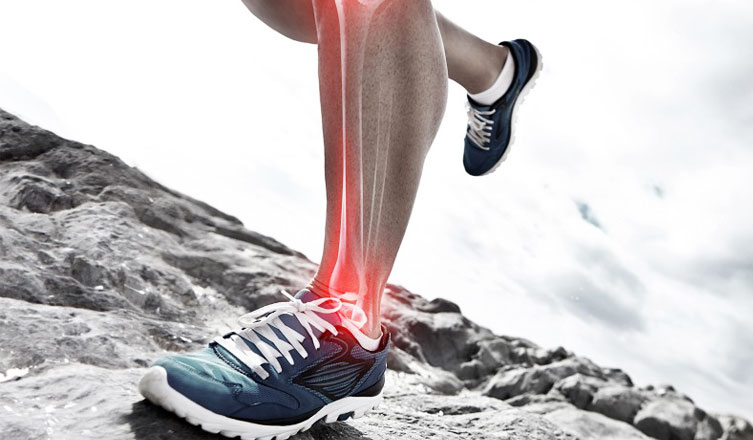What Is Shin Splint?
Medial tibial stress syndrome is commonly referred to as "shin splints." It describes discomfort felt anywhere on the shinbone between the knee and the ankle. This injury is more common in people who participate in sports that require a lot of running. Overuse, such as trying to exercise above your present level immediately is one of the most frequent causes of this pain. It's also possible that the tendons and muscles that run the length of the shin are what's putting pressure on the bone and causing inflammation. Shin splints can be painful, but there are easy cures for them. Applying ice, getting adequate rest, and stretching are all beneficial. Avoiding overdoing the regular exercises is the greatest method to avoid shin splints and soreness.
Symptoms
Shin splints cause pain around the shin bone's inner border. Pain typically occurs during activity and may linger for a bit after.
Swelling and soreness of the shinbone are further symptoms of shin splints.

Why do shin splints develop?
Shin splint pain is brought on by exerting too much tension on the shin bone and the tissues that connect it to the muscles surrounding it. The increased force results in discomfort and inflammation because it makes the muscles enlarge and puts more strain on the bone. Stress responses to bone fractures can also cause shin splints. Small cracks in the leg's bones can develop due to the repeated beating. If given enough time to relax, the body can mend the cracks.
Small cracks, however, might develop into full fractures or stress fractures if the body is not given time to rest.
Shin splints prevention:
Shin splints can be avoided in a number of ways:
1. Cross training:
Jogging should be alternated with lower-intensity activities like cycling and swimming.
2. Running barefoot:
Running barefoot is supposed to treat shin splints because it prevents the overuse of any leg muscles.
3. Putting on the right shoes
It's essential to wear proper shoes. Long runs performed in court sneakers can cause shin splints.
4. Slowly increasing fitness level
Shin splints can develop if workout intensity is suddenly increased. It is always advised to gradually raise the intensity over time.
How are shin splints diagnosed?
Shin splints can typically be identified by your doctor during a medical examination. They'll enquire about the kinds of physical activities you enjoy and how frequently you engage in them.
If your doctor suspects you may have a bone fracture or any condition other than shin splints, they may order diagnostic testing including imaging scans and X-rays.
PRP Therapy for Shin Splints:
Shin splints can be treated in a number of ways, such as resting, taking anti-inflammatory drugs, applying ice, doing muscle exercises, and even wearing supportive shoes. However, Platelet Rich Plasma, or PRP Therapy, is the most effective treatment available today. This treatment entails extracting blood from the patient's body, treating it with various substances, and then injecting it into the damaged location. PRP contains a lot of growth factors, which aid in the quick healing and regeneration of soft tissues that have been hurt or destroyed as a result of specific activities. PRP can also take the place of surgery.










